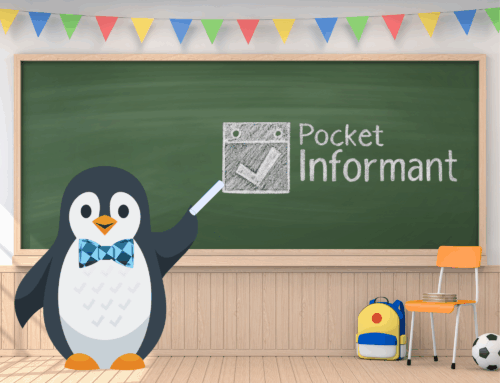Most people start the day with good intentions. They wake up, make coffee, sit down to work, and promptly get ambushed by email, Slack, meetings, notifications, and that one coworker who starts every message with “Quick question.” Suddenly it is noon and the only thing you have accomplished is opening the laptop.
Time blocking can save you from this familiar spiral.
Instead of drifting through the day reacting to whatever appears, time blocking lets you take control of your schedule, protect your focus, and actually finish what you intended to start. Pocket Informant makes this process simple, flexible, and far less intimidating than it sounds.
Here is how to use time blocking to make your days smoother, calmer, and more productive.
What Time Blocking Actually Is
Time blocking is the practice of dividing your day into dedicated sections of time and assigning each block to a single focus. You decide what gets your attention and when. Meetings get a block. Deep work gets a block. Email gets a block. Even lunch gets a block so you do not accidentally skip it and end up eating crackers at your desk at 3 p.m.
The goal is simple. You create structure so your attention is not constantly hijacked.
Why Time Blocking Works
Time blocking works because it replaces vague intentions with real commitments. Instead of saying, “I should work on the report sometime today,” you set a specific time. At 10:00 a.m. you work on the report. You are not guessing. You are not juggling. You know what your brain should be doing and your brain appreciates the clarity.
Time blocking also:
-
Reduces decision fatigue
-
Helps prevent overbooking
-
Protects deep focus
-
Makes large tasks feel manageable
-
Highlights unrealistic workloads before your day collapses
It is both a productivity method and a sanity-saving tactic.
How to Time Block in Pocket Informant
Pocket Informant already handles your calendar, tasks, and reminders, which makes it the perfect home for time blocking.
1. Start With Your Non Negotiables
Add the things that cannot move. Meetings, appointments, school pickups, deadlines, and any fixed commitments get placed first. These act as the frame for the rest of your schedule.
2. Turn Tasks Into Calendar Blocks
Choose your most important tasks for the day and convert them into events. Block time for writing, designing, budgeting, planning, phone calls, or anything that needs focused effort.
Seeing tasks inside your calendar helps you stay honest about what you can actually get done.
3. Build Buffer Time
No day runs perfectly. Give yourself room between blocks so you do not end the day fifteen minutes behind from sunrise until dinner.
Buffer time is the difference between a humane schedule and a meltdown schedule.
4. Create Theme Blocks for Repeated Days
Some people use themed days such as Meeting Monday, Focus Tuesday, or Admin Friday. Others use themed times of day such as Mornings for Deep Work or Afternoons for Communication.
Pocket Informant lets you create templates or recurring blocks so your ideal week builds itself.
5. Review and Adjust
Time blocking is not rigid. It is a living system. Use Pocket Informant to drag, resize, and rearrange blocks when life happens. The goal is to protect your priorities, not punish yourself when something shifts.
Tips for Time Blocking Like a Human Being
Keep Your Blocks Realistic
A two hour focus block is great until you hit the ninety minute mark and start hallucinating snack options. Start small and build from there.
Protect One Daily Priority
If everything is important, nothing is. Pick the one thing that absolutely must happen and give it a protected block.
Batch Similar Tasks
Answering emails all day in tiny bursts is a productivity killer. Batch communication into one or two dedicated blocks and free your brain from constant context switching.
Forgive Imperfect Days
Time blocking is not about perfection. It is about intention. If your day falls apart, adjust and start fresh tomorrow.
The Real Secret Benefit of Time Blocking
Time blocking does more than organize your day. It gives you permission to stop working when your work time ends. When you schedule both tasks and rest, you create balance instead of burnout.
You stop ending the day wondering where the time went. You start ending it knowing exactly what you accomplished.
Final Thoughts
Time blocking is one of the simplest ways to bring order to a chaotic schedule, and Pocket Informant makes it easy to turn the theory into a routine. Whether you want to reduce stress, increase output, or stop your day from dissolving into a blur of random tasks, time blocking gives you structure and clarity.






Leave A Comment
You must be logged in to post a comment.